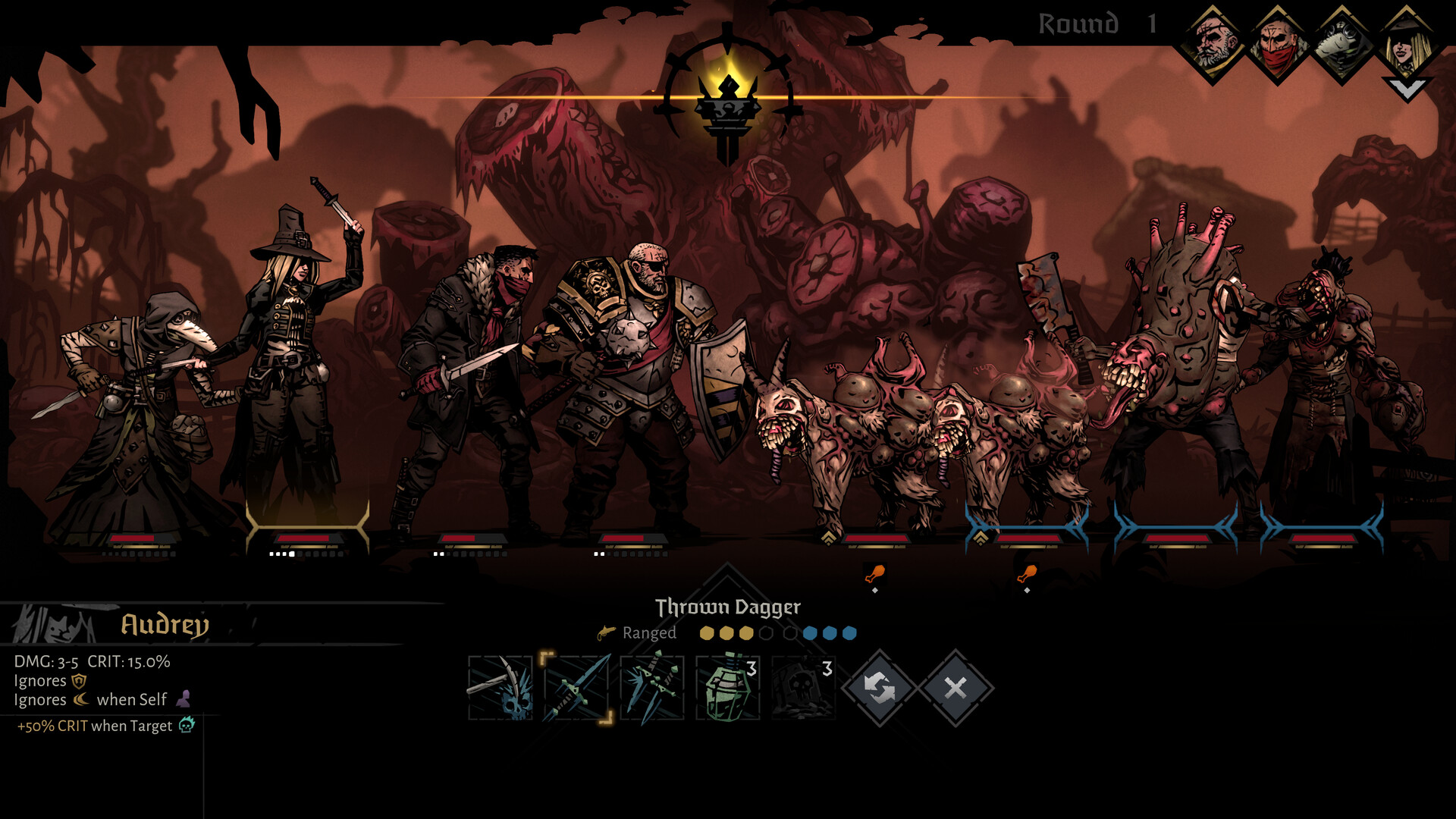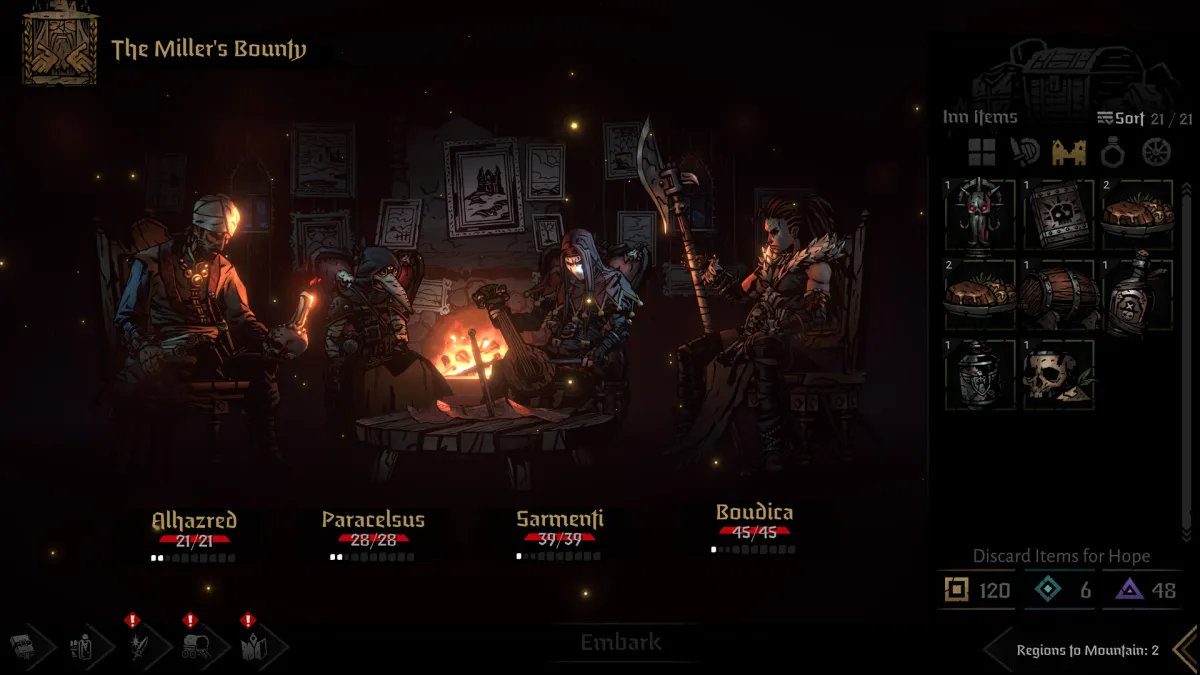“What is a physician if not a student of decay?” The stiff plague doctor in Darkest Dungeon II doesn’t have time to smell the flowers. The grimdark roguelike lets you discover her backstory across stagecoach trips with only a flickering flame for comfort. But while you can discover her past over multiple runs, her current state of mind is shaped by her misfit companions.
Healing and buffing each other across Darkest Dungeon II’s tense turn-based battles can turn acquaintances into allies. But choices that not everyone is on board with can test your relationships. Aggravate your team enough and watch combat effectiveness take a nosedive.
While some choices are nearly impossible to sidestep, considering the fickle minds of your party will minimize scuffles and even net you some neat perks. In Darkest Dungeon II, your enemies aren’t the only challenge you have to overcome. An affinity system keeps track of your decisions and how they affect your party members, for better or worse.
My plague doctor and hulking man-at-arms had issues. Her goggles didn’t have the penchant for understanding that the latter’s war-torn gaze did. When we met some troubled townsfolk, the absolute unit of a gentleman suggested a donation. It wasn’t exactly charity because we could learn more about the map in return. My plague doctor, however, wanted the poor sods to fix our wagon. Against my nature, I took the doc’s prescription. I needed my stagecoach to take some blows if I wanted to make it to an inn.
That decision saved my party and got me to the next inn, a temporary haven of safety. But amidst my party, tensions rose. Things escalated, leading to the two heroes marking out abilities that would trigger the other’s suspicions. This added to the already frustrating nature of the game’s combat encounters. Attempting to ignore key skills hampered my decisions, opening up new challenges by closing doors. When I was desperate enough to use those forbidden abilities, my party’s focus shifted from battle reflexes to petty taunts.

If one hero missed an attack, the other would toss a witty remark that stirred tensions. Those low blows stung as a player, especially since Darkest Dungeon II enemies prey on weakness. Even when the hulking man-at-arms stepped ahead of the frail doctor with his shield, all he received were jabs and stings.
It didn’t take long for the plague doctor’s stress levels to peak, resulting in a meltdown that nearly wiped out my expedition. When a hero reaches their breaking point in Darkest Dungeon II, they lose affinity with other heroes, dragging unrelated members into a bitter rivalry. It took my highwayman nearly all of his wits to keep the party from getting torn apart.
As the sole hero who seemed to be on decent terms with the others, I started treating him like the figurehead of my expedition. A few decisions nearly turned my stagecoach into a vegetable cart, but I managed to pull through. When we reached the next inn, old bruises had been tended to and my weary heroes no longer tripped on each other’s shoes.
A glimmer of hope in my plague doctor’s eyes turned into a spark as a man-at-arms’ shield protected her. Emboldened, she tossed a vial into the enemy ranks, blinding them as the highwayman readied his pistol. For once, the cultists in front of them were the only threat. Juggling the desires and expectations of my party members deepened an already gritty experience. Things didn’t always go my way, and that was the point. Darkest Dungeon II is unforgiving, but that makes the little wins that much more memorable — especially when my party grew out of their rivalries and worked together in turn-based harmony.






Published: May 14, 2023 12:00 pm